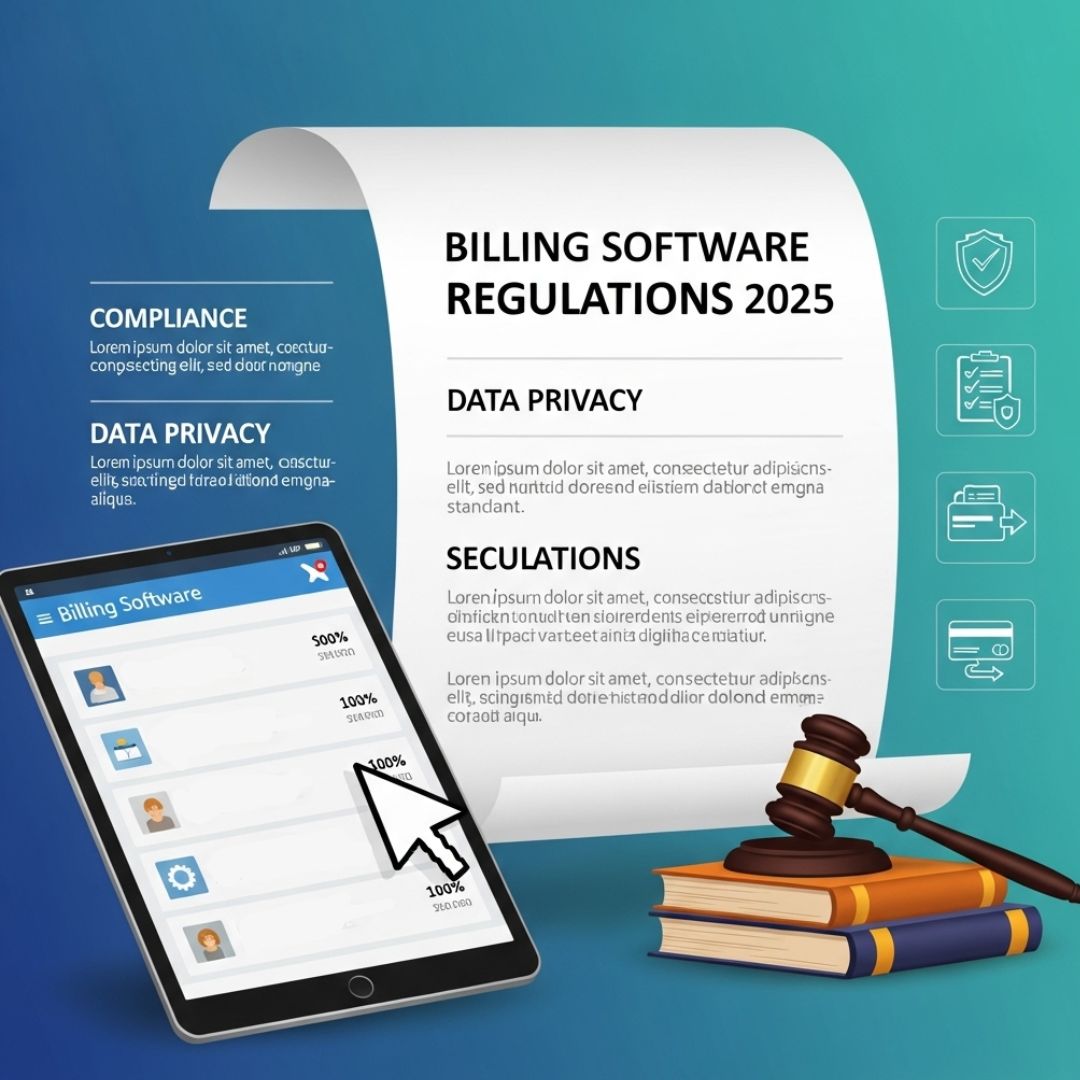Decoding GST Billing Software Rules and Regulations for 2025
The Goods and Services TAX (GST) system in India has undergone significant changes since its launch in 2017. Playing an important role in terms of technology, companies today depend a lot on GST billing software to ensure accurate invoices, tax submission and record keeping. As we continue until 2025, many new updates, guidelines, and regulatory requirements have shaped how billing software should be operated. Understanding these rules is essential to remaining compliant with any business and avoiding penalties.
Key GST Billing Software Regulations for 2025
1. Mandatory E-Invoicing for All Businesses
In the past, only large companies needed to issue an E-Challan. By 2025, the threshold will have been reduced, and now each business must use e-invoicing with an annual turnover above 5 crores. Invoicing software must originally integrate with an invoice registration portal (IRP) to generate unique IRN (invoice reference numbers).
2. Real-Time Data Synchronization with GSTN
The GST network (GSTN) now needs the invoice and real-time reporting of returns. Modern GST -invoicing software should be able to sync invoices data automatically with the GSTN server. This reduces errors and ensures transparency in transactions.
3. Automated GST Return Filing
When the GST return submission becomes more streamlined, software solutions are expected to automatically generate GSTR-1 and GSTR-3B reports based on the recording shells. Companies no longer need to cover data manually, as updated invoicing software can automatically confirm ITC (input tax credit) requirements and tax liability.
4. QR Code on All Invoices
The use of the QR code on the invoice has become compulsory for companies that cross the specified turnover limits. GST -invoicing software should be updated to generate a dynamic QR code including invoice details for easy verification, GSTIN, and IRN.
5. Input Tax Credit (ITC) Reconciliation Rules
The government has tightened the rules for ITC requirements in 2025. Businesses can now demand ITC only when the supplier has submitted this Challan. Advanced GST-invoicing software is equipped with ITC reconciliation equipment that corresponds to the purchase Challan with GSTR-2 B, which ensures valid requirements.
6. Data Security and Encryption Standards
Since the billing software handles sensitive economic data, the government has implemented new cybersecurity guidelines. GST invoicing solutions should now follow encryption standards, secure login protocols, and two-factor authentication to protect against fraud and data leaks.
7. Sector-Specific Compliance Features
Some industries, such as e-commerce, logistics, and production, have unique GST rules. In 2025, invoicing software is expected to offer industry-specific modules that automatically use relevant tax rates and reporting formats.
Benefits of Complying with New Rules
To use GST -invoicing software that corresponds to the 2025 rules provides many benefits:
- Faultless Challan: Tax ends human errors in calculation and formatting.
- Quick match: Automating filing, reconciliation, and reporting.
- Better ITC claims: Maximum and accurate credit ensures eligibility.
- Audit-Ready Records: Maintains digital, tamper-proof records for inspections.
- Occupational skills: Saves time, reduces paperwork and increases openness.
Preparing Your Business for 2025
Companies should evaluate whether their current invoicing software is in accordance with the latest GST rules. Big ideas include:
- Does the software support e-invoicing and IRN generation?
- Is it capable of real-time GSTN integration?
- Does it automatically provide ITC to detect reconciliation and errors?
- Are data security measures in place?
- Does the software regularly update with government information?
If the answer to any of these is “no, it is time to upgrade the GST invoice solution that meets 2025 compliance standards.
Conclusion
The year 2025 brings a new wave of digital compliance under the GST regime. From compulsory e-invoicing to ITC rules and data security protocols, companies should ensure that their invoicing software is updated and compliant. Staying forward in GST compliance not only prevents punishment, but also streamlines operations, improves efficiency and creates confidence in customers and tax authorities. By decoding and using these GST-invoicing software rules, businesses can be developed for the future by developing India.





